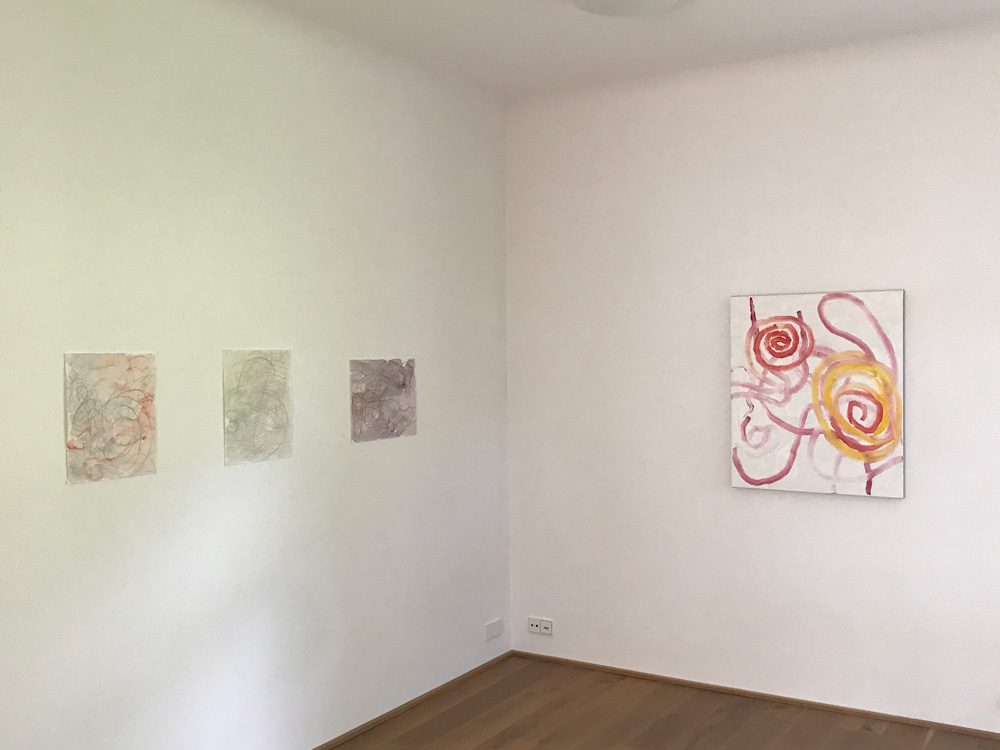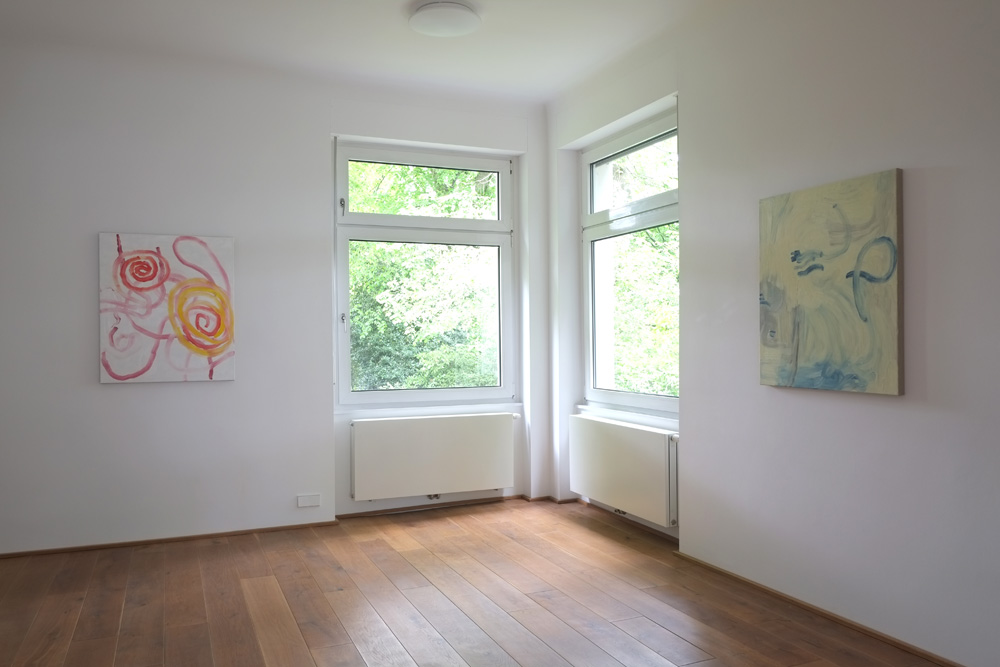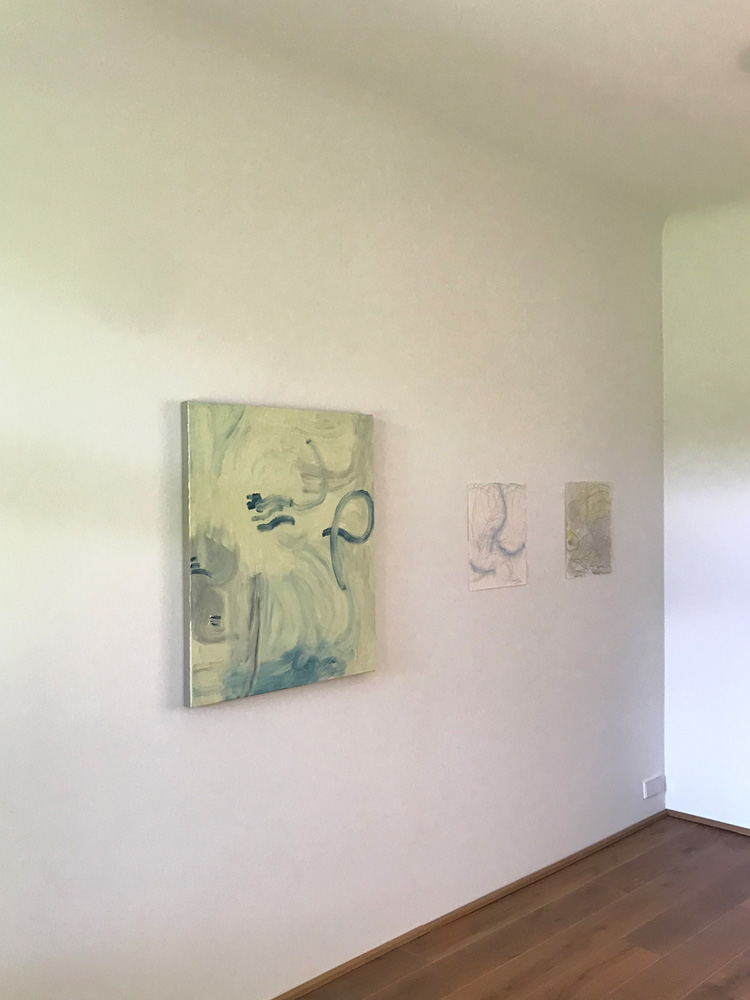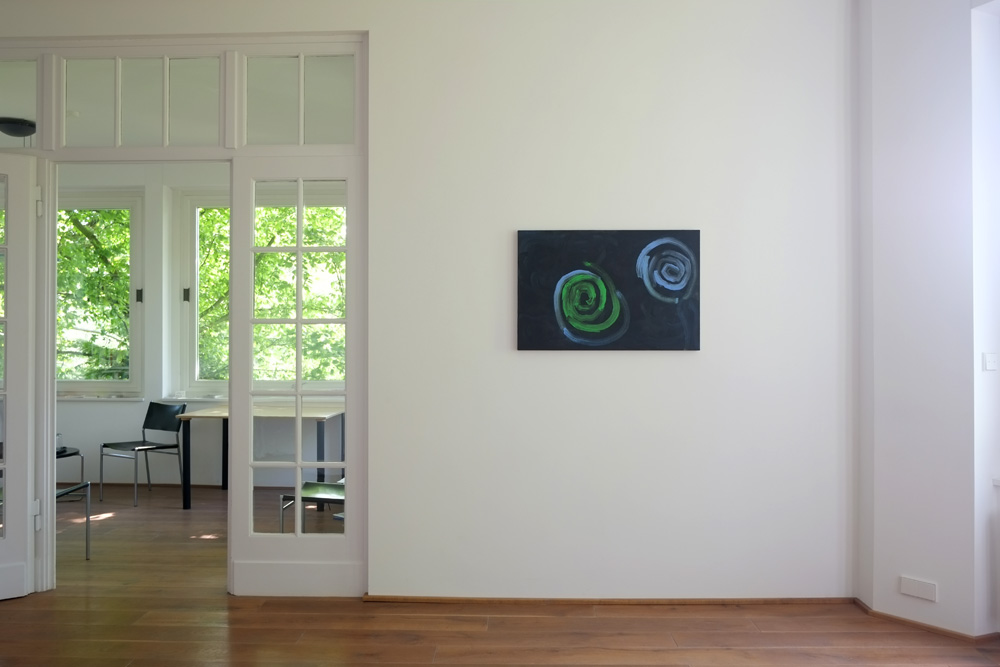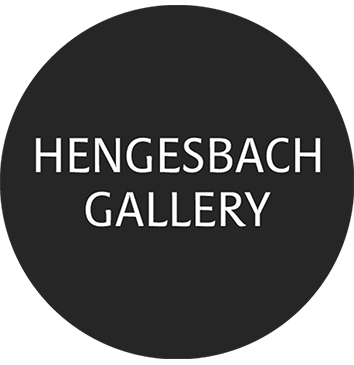Ulrich Wellmann
April 30 – June 14, 2019
Imagine three or four quite different people encountering one another and beginning a conversation, from which a colorful exchange develops. The first speaker would lay the foundation for the dialogue with their remarks, the others would build upon it, respond to the ideas of their predecessors, and perhaps be surprised by the thoughts they were prompted to express. If one were to recall the conversation from memory, the various ideas would blend together, no longer clearly separable, since even the initial thoughts would have changed in their tone under the influence of the others’ contributions. And the participants themselves might wonder at the twists and turns they had been drawn into.
One can view the paintings of Ulrich Wellmann as conversations of colors about life. The colors represent distinct characters, appearing in a certain light through their interaction, telling of their nature, their life energy, and their will to live. Yet none of the colors remain constant in their chromatic value or tone. For in the application of color with a brush, the quantity of paint distributed can vary greatly depending on the pressure and movement of the brush. When additional colors are introduced and painted wet-on-wet, they blend, and their tones and characters converge—down to the subtlest nuances and tonal shifts.
If the movements of painting are not limited to isolated areas of the image but instead extend across the entire surface, then these characters are continuously interrelated—encountering one another, avoiding, winding around each other. And since Wellmann’s brush remains in constant motion, continually changing direction, circling, and swinging in varied radii, the character-traces can hardly be distinguished anymore. The different voices are no longer arranged in sequence, but coexist simultaneously.
Yet, since one color always lays the foundation of the conversation—that is, the base of the image—the other tones appear to grow out from it. Life always has certain starting positions from which its activities emerge. These not only add something new to life but also gradually obscure the initial point of origin. As the movements of life never cease, one can see it as a spiraling process that constantly surpasses itself and also returns to itself. In everyday life, we tend to forget the richness of our starting points, with all their inherent potential. But in Wellmann’s paintings, where life’s space of motion is compressed into a limited surface, everything is preserved. The dialogue with the self, the continuation of movement, becomes visible as a continuous process of reference and ongoing transformation.
The image surface becomes a stage upon which the richness of life is enacted. This richness is not an overwhelming variety of disjointed colors, but rather begins with a deliberate limitation to a few fundamental differences, which then unfold into a wealth of subtle nuances—always rising out of, and returning to, the established ground of the painting. To keep painting, then, is not merely the motivation to continue one’s previous life habits with renewed effort—it is the inability to let go of oneself. Life is change, reversal, taking a new turn, extending the spiral, and at the same time a constant looking-back-into-the-mirror. But just as a spider can never fully see its own web because it is endlessly occupied with spinning it, so too is the narcissistic act of looking into the mirror never a neutral gaze into completeness, but rather a perpetually clouded view of emerging discolorations—and reacting to those shifts. Continuation is not only the inspiring demand for persistence, but also the restlessness of being condemned to never be allowed to stop.
Wellmann’s use of contrast in his color fields has become more dynamic and far-reaching in recent years—no longer confined to local areas of the image, but sweeping across everything. The contrast values themselves have become more pulsating: sharper in their opposition, yet at the same time more modulated and introspectively withdrawn. The formerly hovering balances have tipped; the distinction between image ground and formal development has become blurred. It grows increasingly uncertain who is pulling whom along—whether the starting point still anchors the unfolding life, or whether that unfolding is now dragging the origin along into an uncertain future.
For Wellmann, the act of continuing to paint has become an increasingly risky undertaking. In the intensification and more expansive reach of his painting movements, in the more dramatic modulation of chromatic values and tones, life has grown much louder, more piercing. The waves no longer smooth out in the sea of movement. The circling of life is at once escalation, an outward reach toward totality, and the ever-present threat of derailment.
Installation Views

